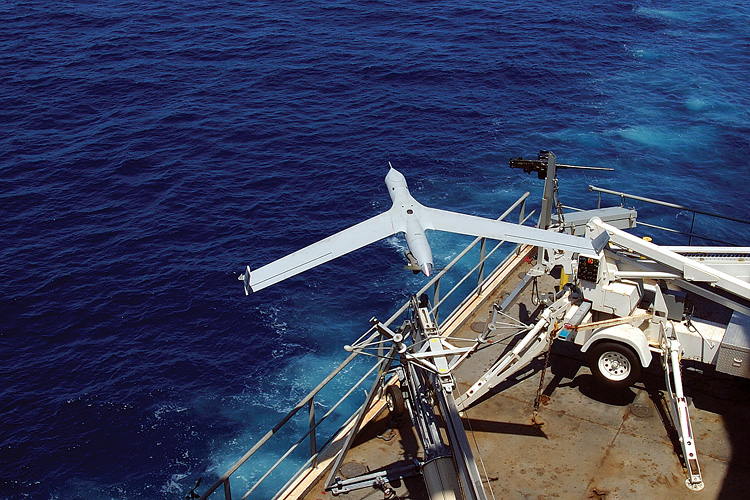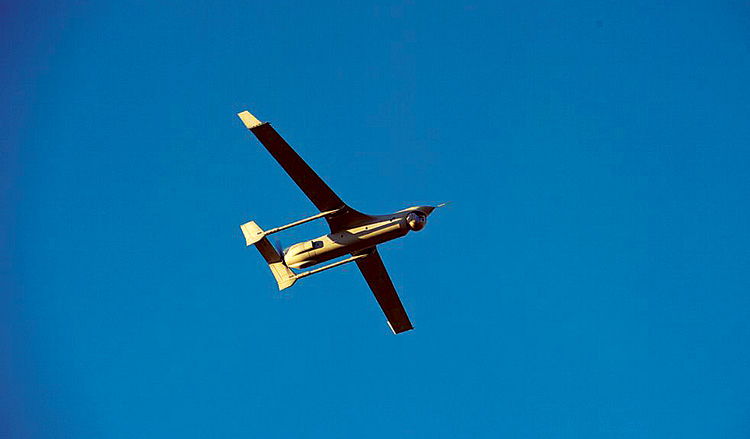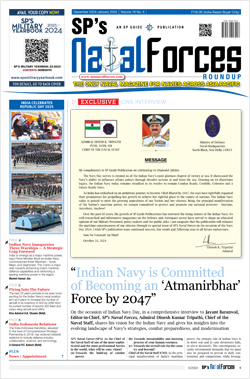INDIAN ARMED FORCES CHIEFS ON OUR RELENTLESS AND FOCUSED PUBLISHING EFFORTS

The insightful articles, inspiring narrations and analytical perspectives presented by the Editorial Team, establish an alluring connect with the reader. My compliments and best wishes to SP Guide Publications.

"Over the past 60 years, the growth of SP Guide Publications has mirrored the rising stature of Indian Navy. Its well-researched and informative magazines on Defence and Aerospace sector have served to shape an educated opinion of our military personnel, policy makers and the public alike. I wish SP's Publication team continued success, fair winds and following seas in all future endeavour!"

Since, its inception in 1964, SP Guide Publications has consistently demonstrated commitment to high-quality journalism in the aerospace and defence sectors, earning a well-deserved reputation as Asia's largest media house in this domain. I wish SP Guide Publications continued success in its pursuit of excellence.
- MoD initiates comprehensive review of Defence Acquisition Procedure 2020, pushes for defence reforms
- G7: The Swansong
- Kalinga Connect: South Asia to Polynesia
- Advanced MRSAM for India for a greater firepower
- Must Credit DRDO for Operation Sindoor, now what is next for defence R&D?
- Operation Sindoor | Day 2 DGMOs Briefing
- Operation Sindoor: Resolute yet Restrained
ScanEagle & Integrator — May be Made in India
The offer of drones from Insitu Pacific, Australia, is expected to dramatically change the surveillance capabilities of the Indian maritime security agencies and forces deployed on borders to prevent terrorist infiltration

If negotiations with Indian defence and armed forces officials proceed well, India could soon be producing the most advanced Integrator and ScanEagle drones. The Indian Navy and the Indian Army want to deploy these surveillance drones for keeping a close watch from the sky on any surreptitious movements not only in the coastal areas but also on the high seas and land border areas. These unmanned aerial systems (UAS) can very effectively watch and locate the launch pads of the terror groups, who are ready for infiltration into India, specifically in Jammu and Kashmir (J&K).
Designed, developed and produced by Insitu Pacific, the Australia-based fullyowned subsidiary of the Boeing Company, it has offered these highly advanced and most effective maritime and overland surveillance systems to the Indian armed forces, which will greatly boost the capabilities of Indian security agencies to keep a close watch on the Pakistani terrorist infiltration from across the line of control and the international border in J&K. The company describes the ScanEagle as agile, virtually undetectable, and on station until the job is done. According to a company official, the hardworking ScanEagle delivers persistent imagery on land or at sea at a fraction of cost of other surveillance methods. These drones can keep continuous surveillance day and night. The Integrators are the latest unmanned aerial systems with the ability to carry out longer missions with larger payloads.
The Integrator has an empty structure weight of 36+ kg with a maximum payload of 18 kg and a maximum take-off weight of 61.2 kg including the fuel. This UAS is powered by reciprocating piston engine developing eight horsepower and runs on heavy fuel or auto gas. The vehicle is designed for a maximum speed of 90 knots with a service ceiling of 20,000 feet. Though after the 26/11 Mumbai terror attack, the Indian Navy and the Coast Guard have deployed many systems like automatic identification systems (AIS) in the over 7,000-km-long coastline, the two category of drones on offer from Insitu Pacific is expected to dramatically change the surveillance capabilities of the Indian maritime security agencies and forces deployed on borders to prevent terrorist infiltrations.

During a visit to the Insitu facility in Brisbane, a senior official of the company Brad Jeismann revealed that the company is engaged in serious discussion with Indian private sector companies to set up production facilities in India for supply of not only to the Indian armed forces but also for exports. According to Jeismann: “Any acquisition of unmanned aerial systems would consider the overall architecture of the system and not just the platform. We have had a number of discussions with a number of Indian companies on what could be possible to support our Make and Buy India strategy. It has been really enlightening to go ahead and conduct these discussions. We have been quite positive that we can produce some elements in the country.”
These unmanned aerial systems (UAS) can very effectively watch and locate the launch pads of the terror groups, who are ready for infiltration into India, specifically in Jammu and Kashmir
The ScanEagle has been under production since early last decade and in use with the US and Australian maritime agencies since the middle of last decade. The ScanEagle was deployed with US Maritime command in 2004 and a year later US Navy acquired these UAS. In 2006 the Australian Navy deployed the ScanEagle. The US Air Force also acquired these UAS in 2008. Insitu has been constantly engaged in enhancing its surveillance capabilities and it has now evolved into a most effective aerial tool to keep a track on the intruding vessels from the sea. The ScanEagle has by now accumulated over 7,00,000 combat flying hours. Also described as ‘low altitude low endurance unmanned aircraft system’, the ScanEagle has latest technologies that include the synthetic aperture radar, signals intelligence and electro-optical infrared payloads. With these advanced systems onboard, the UAS automatically detects, highlights and tracks sea surface contacts including fast boats, small wooden and rubberised vessels and even people onboard these insignificant looking boats.
The UAS provides thumbnail images and locations of detected objects for sensor operators. These onboard systems enable cross-cuing of other sensors for interrogation and classification. Explaining its capabilities, Brad said that it allows passive search and tracking for covert environments such as drug interdiction and even submarine periscope detection. With 24 hours constant scanning capabilities it can oversee eight times faster and eight times larger areas than the current available UAS. This is why these UAS have been widely deployed even in the AfPak areas. It can focus very closely over 30 nautical miles area and no small fishing boat can escape its eyes. With night vision and dual imaging capabilities, the UAS while observing land areas, can even read car number plates and see the driver sitting inside. Even if somebody is hiding in the shadow of a tree, the ScanEagle and Integrator can observe that person closely. Hence, these UAS have been found to be very effective in keeping a close watch over border areas to prevent any intrusion of terrorist elements or even drug smugglers.
The ScanEagles are 5.1 feet long and 10.2 feet wingspan, with a maximum takeoff weight of 22 kg with a performance ceiling of 19,500 feet and maximum horizontal speed of 80 knots, requires only 60 watt onboard power source. The UAS has software application with state-of-the-art user interface which provides full motion video (FMV) and processing, exploitation and dissemination (PED) tools. These enhance and improve the FMV using features such as video stabilisation and automatic contrast enhancement to get the most of collected imagery. These transform raw data into actionable intelligence using the software exploitation tools enabling accurate real world measurements. The system features plug-and-play computers, vision and metadata processing capabilities to extricate, improve, edit or delete information contained in media or metadata. Hence the UAS provides small footprint solution for command and control of unmanned vehicles and payloads. It enables a single operator to operate multiple unmanned vehicles from one workstation and manage vehicle sensor command and control features on open architecture design that is easily modified using the software development kit. The designers of Integrator and ScanEagle describe these as multi-mission capability platforms which can operate in very dense environments. ScanEagle and Integrator UAS can be launched from a very small 18-metre operational craft or research vessel. These UAS have a very flexible hub and spoke configurations at an offshore base and create an ad hoc communications network to keep ground troops aware and informed. The UAS has surveillance range of over 200 km.
The writer is a Strategic Analyst who visited the facility of Insitu at Brisbane, Australia





